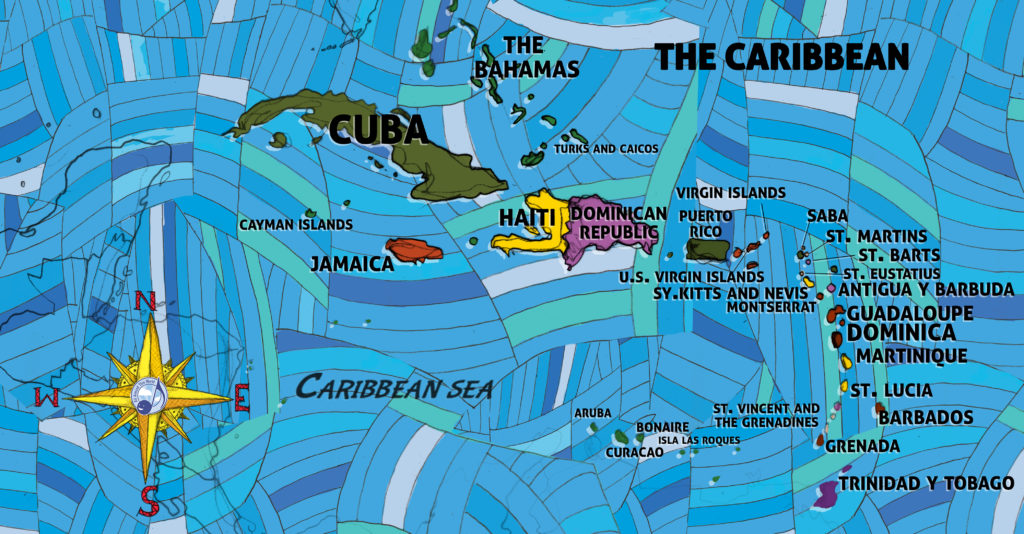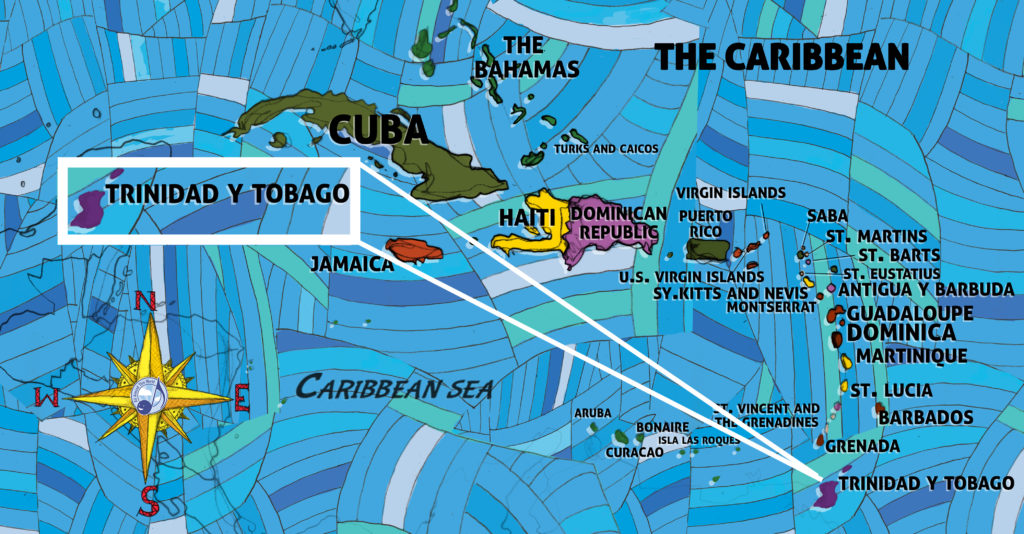In our online classes this season we met the Trinidadian stick-fighting sport of Calinda. One of the songs we sing in our Caribbean season of songs, the Trinidadiaan folk song Bo Calinda, may possibly refer to this martial art, which, much like Brazilian capoeira, is always performed with musical accompaniment. It also could be a song about a beautiful girl — or a girl with a “beautiful mouth” — in Spanish, “boca linda.” Whatever the subject of the song, when we sing it in class we do the hokey pokey. CHEERS!
Limbo Lower Now
Limbo lower now…. How LOW can you GO?
This week we’re looking back on our last three months of Caribbean music and culture, catching some of what we couldn’t bear to miss. For example, limbo originated in Trinidad in the 1950s and quickly became the world’s favorite gimmicky party dance (Chubby Checker demands we all “limbo lower now.”) As in this video, dancers move around the room to Afro-Caribbean rhythms, leaning one by one in turn backward beneath a horizontal pole without touching it or the ground. The stick moves lower and lower until only one dancer who hasn’t touched it or the floor remains. But there’s more to the Limbo than just a fun game to play at the roller rink right before “all skate.” Says Wikipedia, “Consistent with certain African beliefs, the dance reflects the whole cycle of life….The dancers move under a pole that is gradually lowered from chest level, and they emerge on the other side, as their heads clear the pole, as in the triumph of life over death…This dance is also used as a funeral dance and may be related to the African legba or legua dance.” (Note: Very few funerals in the United States feature a limbo.)
Celebrating Caribbean music in all its glory

For the last three months we’ve had so much fun celebrating Caribbean music in all its multicultural glory. As we hopped from island to island we dug deep into the region’s complicated past, one that has struggle and sadness at its core, but which was always aware that the story need not end there. The resilience of Caribbean peoples resonates in every cha cha cha, kompas and clever calypso, in reggae’s hope for justice and change, in soca’s celebratory soul. We emerge from the Caribbean with a love of life, sung with eyes open by those who have survived. Looking forward to next season!
Rikki Jai’s Charismatic Chutney
As far as we’re concerned, Rikki Jai will forever be the only Chutney Soca King.
Indian indentured servants who came to Trinidad from 1845 to 1917 brought their music with them and eventually fused it with island music to form a genre called chutney. Traditional chutney music added Indian instruments like the dholak and the harmonium to Caribbean songs, as well as a religious sensibility and, often, vocals in Hindi. Today chutney has blended with soca to form “chutney soca,” which has become popular international dance music. In this video chutney soca star Rikki Jai gives us a taste.
Wake me up with Parang
Proud and playful Trinidadian parang is a joyful genre of Caribbean folk music.
Parang is a staple of the Christmas season in Trinidad, Tobago and Venezuela. When parang performers regularly start their singing before sunrise and sing LOUDLY to rouse their friends from their beds. This video from Lopinot, Trinidad, introduces us, gloriously, to Trinidadian parang standard, “Rio Manzanares.” (We LOVE this.) In All Around This World classes we give our all to another parang song, “Ola de la Mar.”
What is Calypso? The Mighty Duke Explains
Trinidadian “calypso” most likely derived from a West African musical/narrative style called kaiso and developed as a way for enslaved Africans to communicate.
Trinidadian Calypso musicians sang in French creole and told stories with their songs–often with off-color lyrics full of double entendres. The style originated in the 1830s and was well-known throughout the Caribbean but only became internationally popular in the 1950s when Jamaican-born Harry Belafonte brought it to America. Enthusiasts accused Belafonte of watering down the genre and pointed to lyrically bolder (and much more awesomely named) artists such as Lord Kitchener, Mighty Sparrow and Roaring Lion as the true “calypsonians.” In this video Mighty Duke schools us by asking and answering the question, “What is calypso?”
Trinidad, Tobago and You
This week our online class takes us deep into the islands, to the Caribbean nation of Trinidad and Tobago. Like most of our other Caribbean island friends, Trinidad, which sits near its sister island Tobago in the southern Caribbean just northeast of Venezuela, was already inhabited before Columbus dropped by and told people there that they all of a sudden were living in Spanish territory. Trinidad’s first settlers, about, 5000 years ago, were Othroid people from the north coast of South America, then the Saladoid people, then the Barrancoid people. They were followed by Arawak and Carib people, who met their end shortly after Columbus and the Spanish encomienda system came to town. Trinidad remained Spanish colony until 1802 and a British colony until it became independent in 1962.
This week we’ll explore Trinidad’s multiethnic mix, especially enjoying music and culture created by descendants of enslaved Trinidadian Africans and South Asian indentured laborers who today intertwine to give Trinidad colorful, complex, Caribbean, life.
A Tuk Band tearin’ it up
Our favorite tuk band from Barbados, is EVERY tuk band.
Landship is a tradition from Barbados that refers to both a dance performance group and an essential social-cultural community organization for the African-Barbadian community. Landships organize themselves into individual “ships,” named after British vessels, which unite into “fleets” under the leadership of “Lord High Admirals” and other “officers.” Landship performers will tell you they are not doing a dance; instead they are executing “manoeuvers” to the command of the Captain in the course of a parade. The primary musical “engine” of a landship is the Tuk Band, a drum/fiddle/triangle ensemble based upon British regimental military bands. In this video we hear “tuk” in action.
Ring Ting Ting
The Merrymen definitely want to make you smile. And, when you listen to “Ring Ting Ting,” smile you shall.
The Merrymen is a band from Barbados that became popular in the 1960s due to its happy, uptempo calpyso — a style that became known as “blue beat — its flamboyant troubadour costumes and the very merry whistling of lead singer Emile Straker. while you’re watching this slideshow featuring the best album covers ever.
Ragga Ragga Ragga Ragga Ragga Ragga Ragga Ragga Ragga Ragga Ragga
Does Red Plastic Bag rule Barbados…? You better believe it.
One of All Around This World’s favorite soca songs is “Ragga Ragga,” a mid-’90s Caribbean mega-hit by Bajan musician Stedson Wilshire, otherwise known as “Red Plastic Bag,” “RPB” or even just “Bag.” In the song RPB declares his general disdain for ragga music, in which deejays speak, sometimes incomprehensibly, over a pounding beat.


